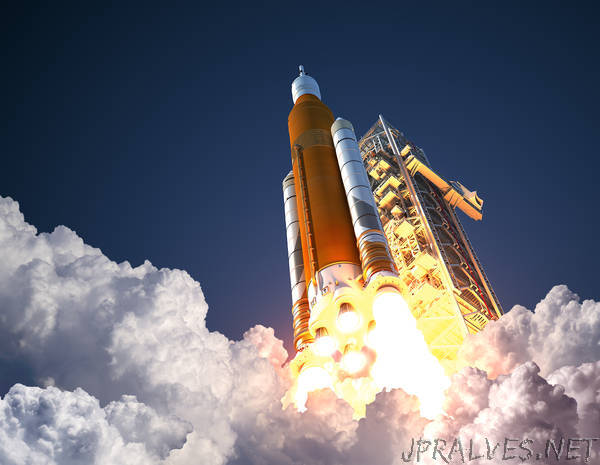
“Nontraditional route shown to increase performance, burn rate
Graphene, a new material with applications in biomedical technology, electronics, composites, energy and sensors, may soon help send rockets to space.
A new propellant formulation method to use graphene foams – material used in electronics, optics and energy devices – to power spacecraft is being developed in Purdue University’s Maurice J. Zucrow Laboratories, which is the largest academic propulsion lab in the world. The research is showing success at increasing burn rate of solid propellants that are used to fuel rockets and spacecraft.
“Our propulsion and physics researchers came together to focus on a material that has not previously been used in rocket propulsion, and it is demonstrating strong results,” said Li Qiao, an associate professor of aeronautics and astronautics in Purdue’s College of Engineering.
The research team, led by Qiao, developed methods of making and using compositions with solid fuel loaded on highly conductive, highly porous graphene foams for enhanced burn rates for the loaded solid fuel. They wanted to maximize the catalytic effect of metal oxide additives commonly used in solid propellant to enhance decomposition.
The graphene foam structures are also thermally stable, even at high temperatures, and can be reused. The developed compositions provide significantly improved burn rate and reusability.
Qiao said the graphene foam works well for solid propellants because it is super lightweight and highly porous, which means it has many holes in which scientists can pour fuel to help ignite a rocket launch.
The graphene foam has a 3D, interconnected structure to allow a more efficient thermal transport pathway for heat to quickly spread and ignite the propellant.
“Our patented technology provides higher performance that is especially important when looking at areas such as hypersonics,” Qiao said. “Our tests showed a burn rate enhancement of nine times the normal, using functionalized graphene foam structures.”
Qiao said the Purdue graphene foam discovery has applications for energy conversion devices and missile defense systems, along with other areas where tailoring nanomaterials for specific outcomes may be useful.
Qiao and the team have worked with the Purdue Research Foundation Office of Technology Commercialization to patent their technologies. They are looking for partners to license them.
Their work aligns with Purdue’s Giant Leaps celebration, acknowledging the university’s global advancements in space exploration as part of Purdue’s 150th anniversary. Space exploration, including propellants research, is one of the four themes of the yearlong celebration’s Ideas Festival, designed to showcase Purdue as an intellectual center solving real-world issues.”
